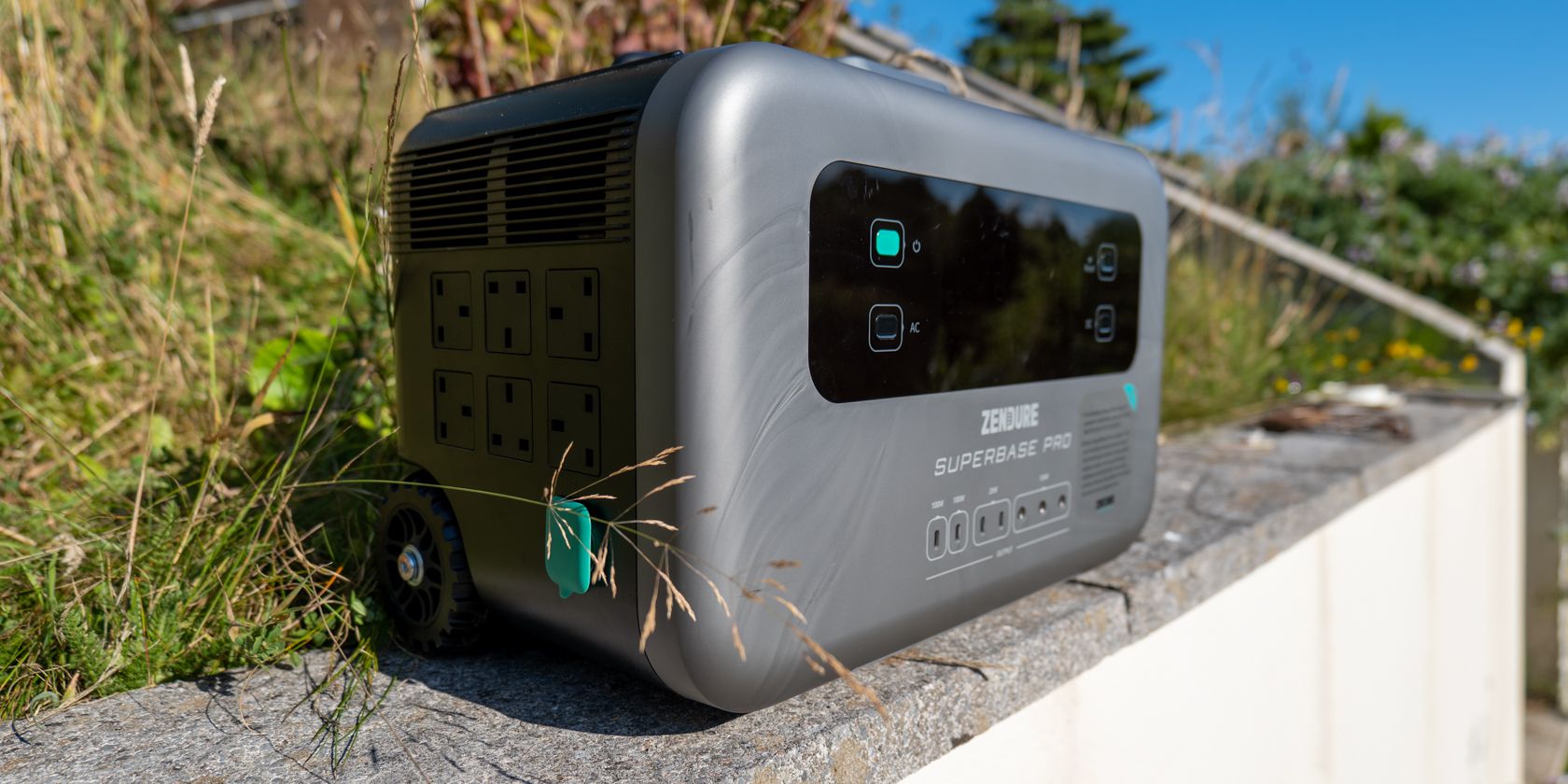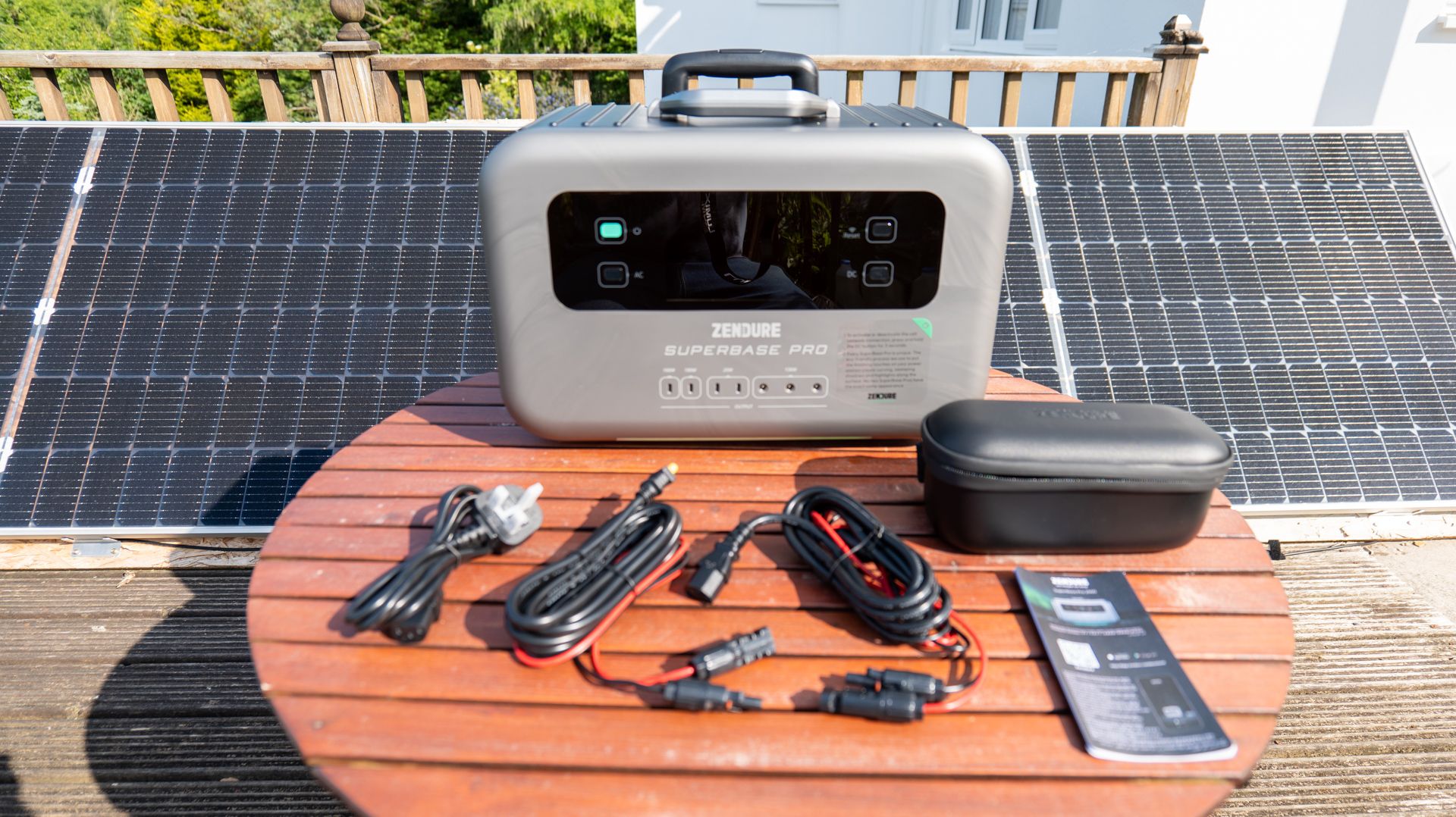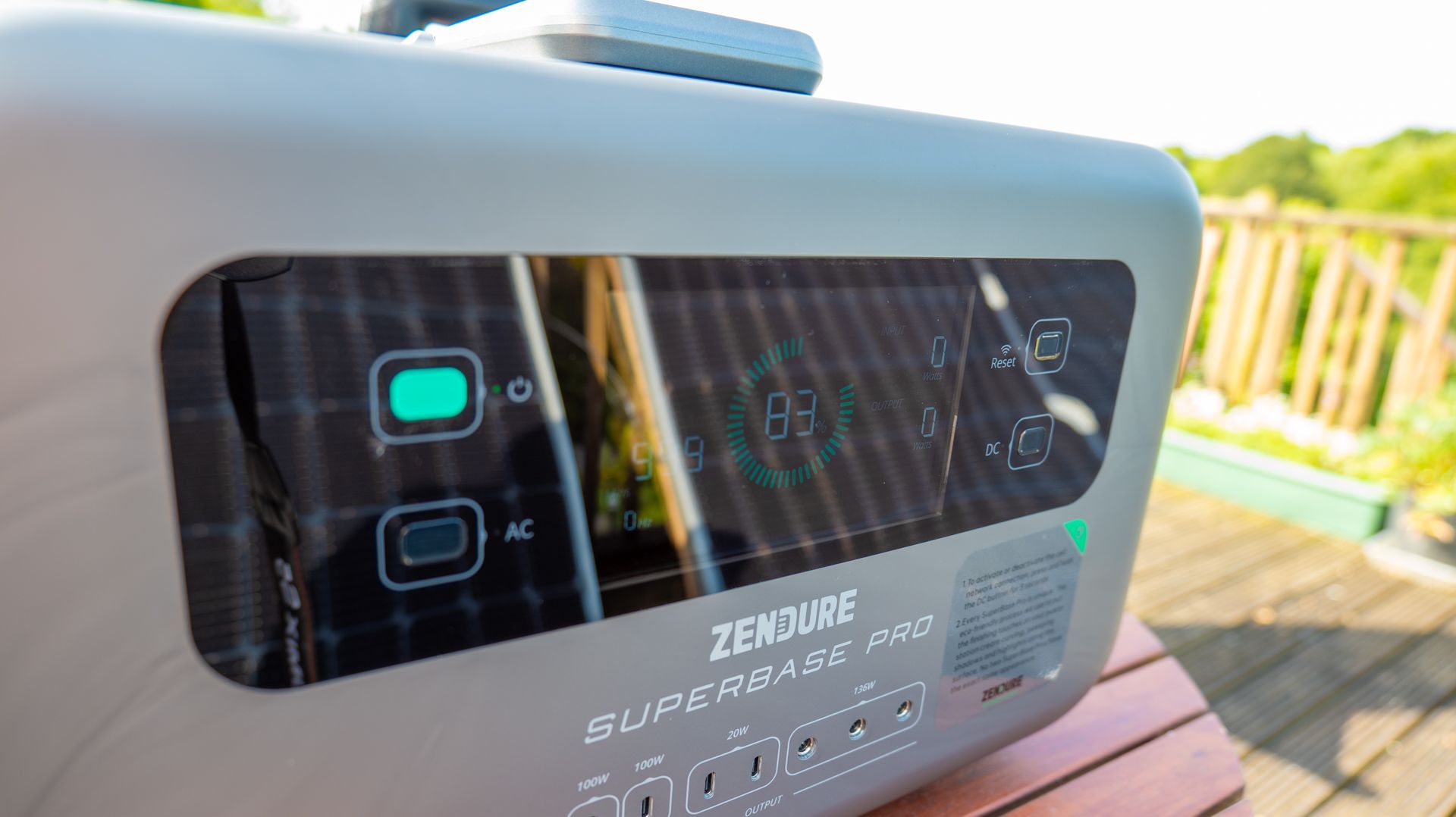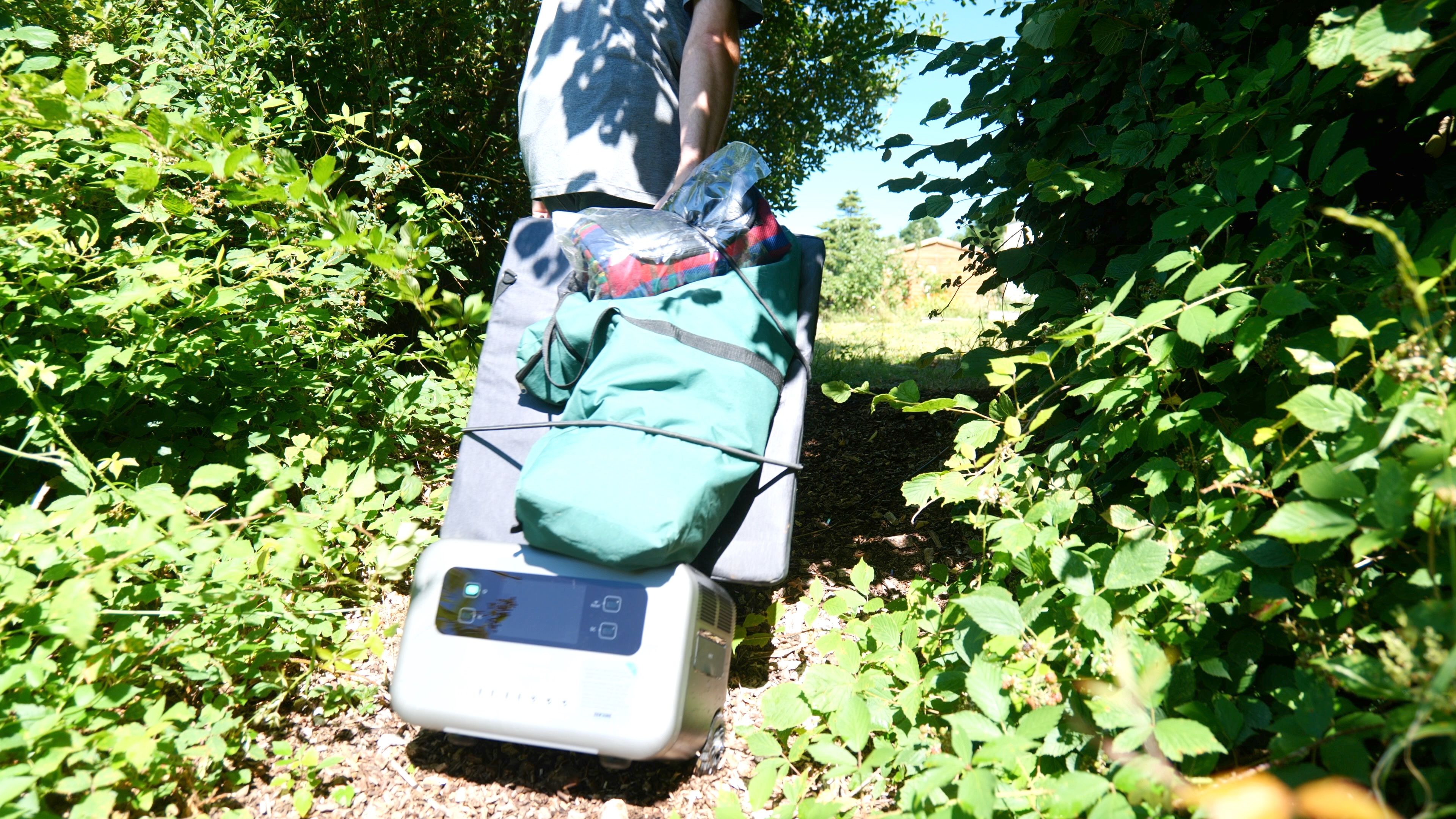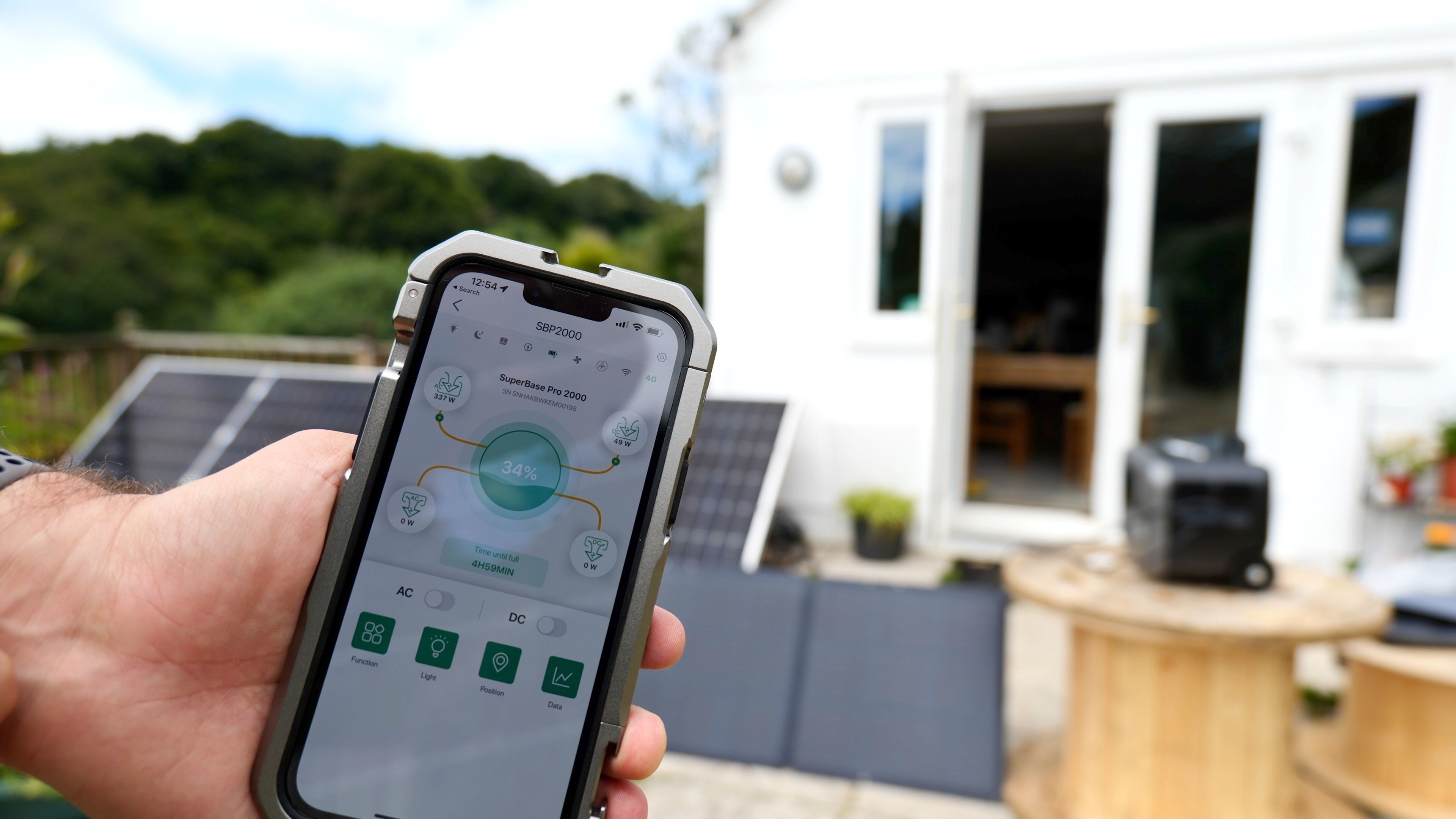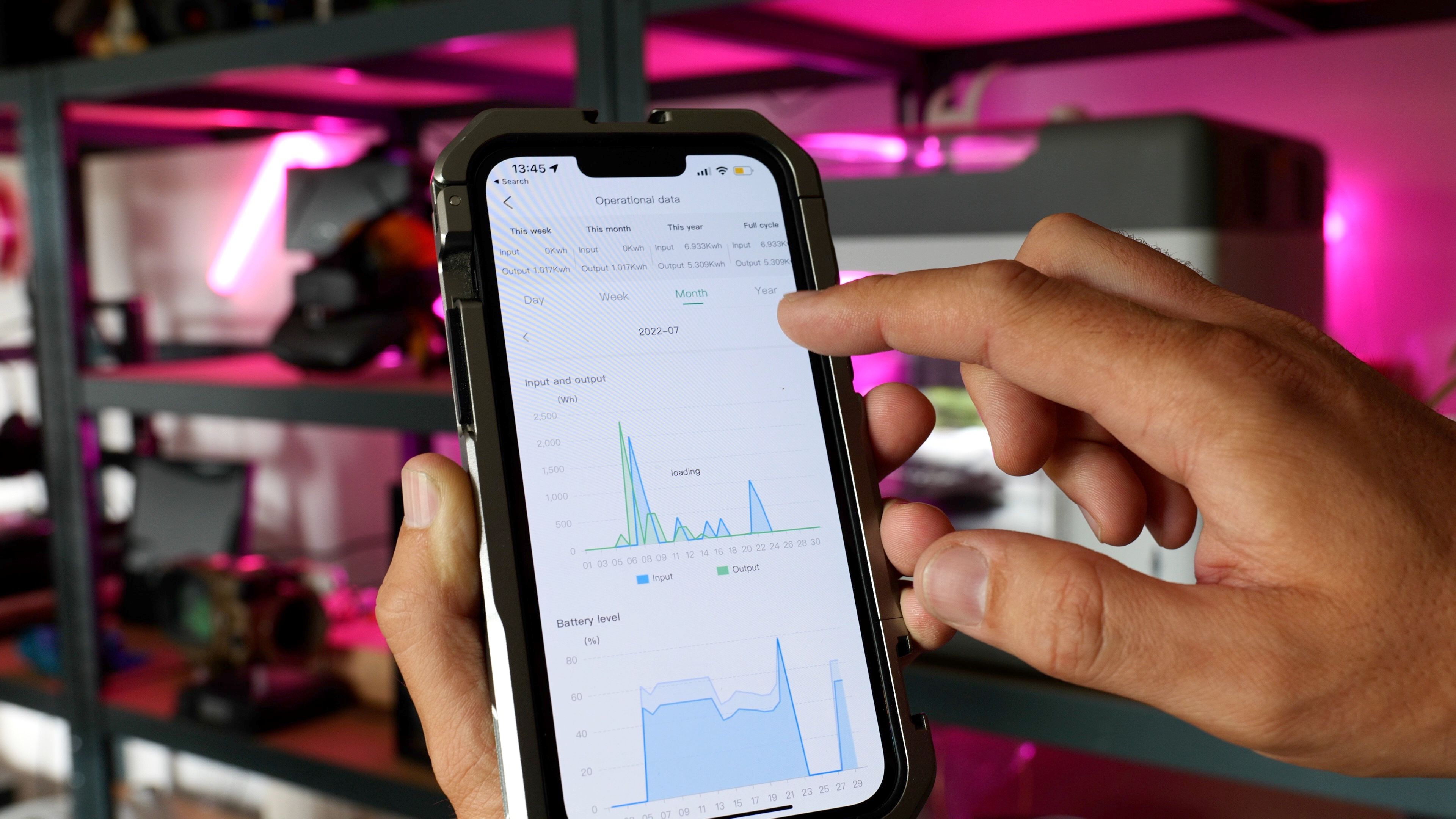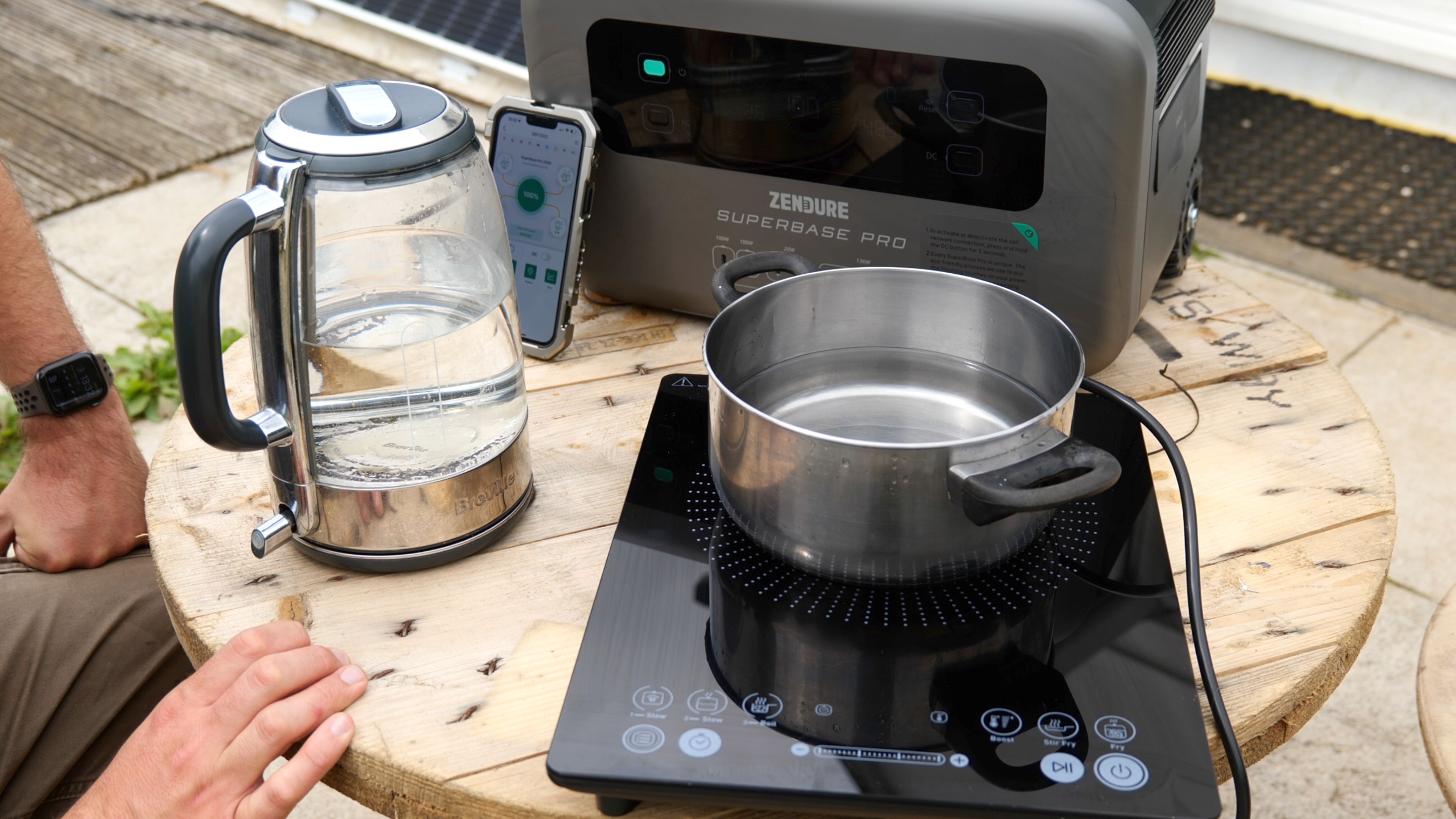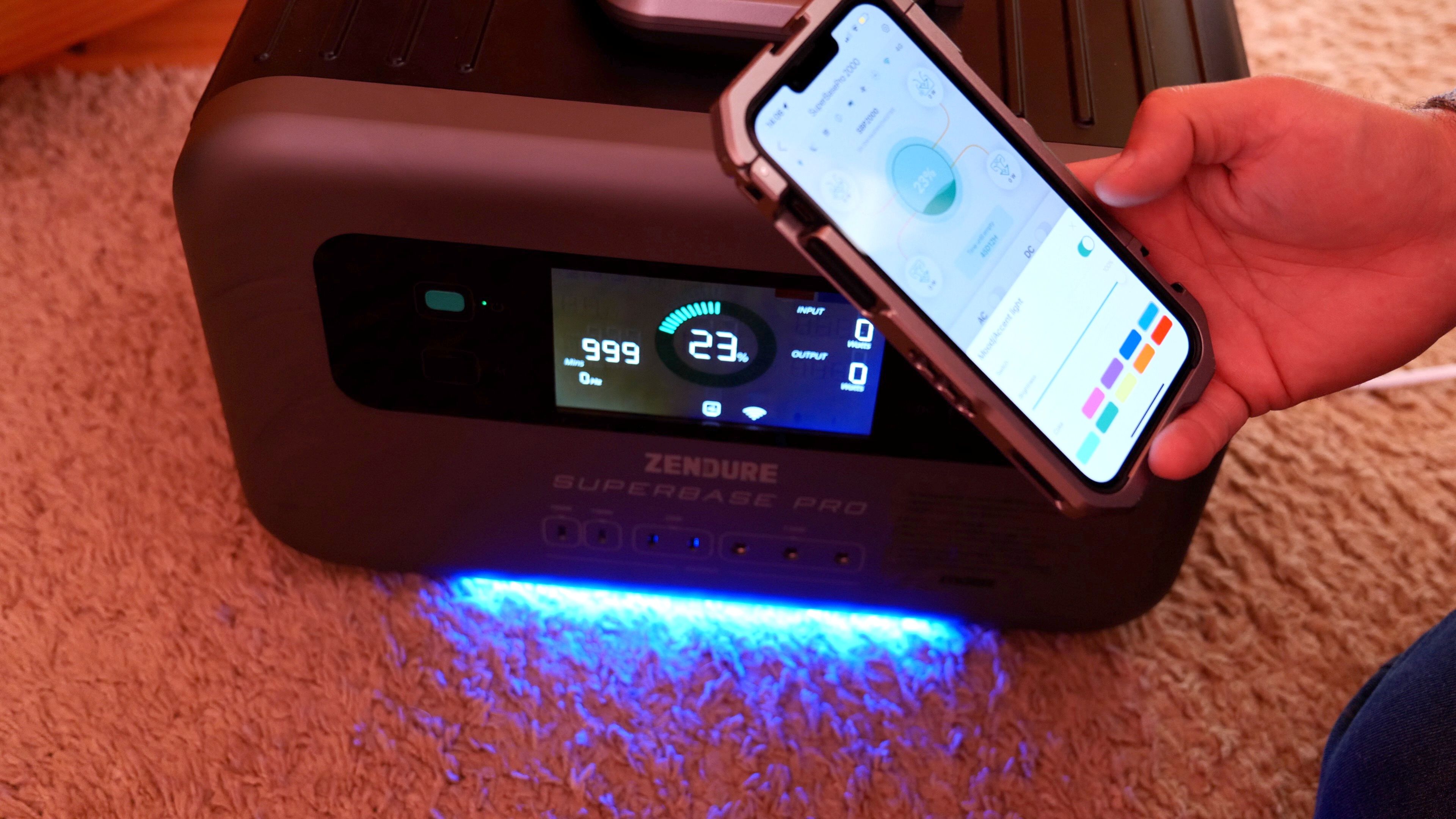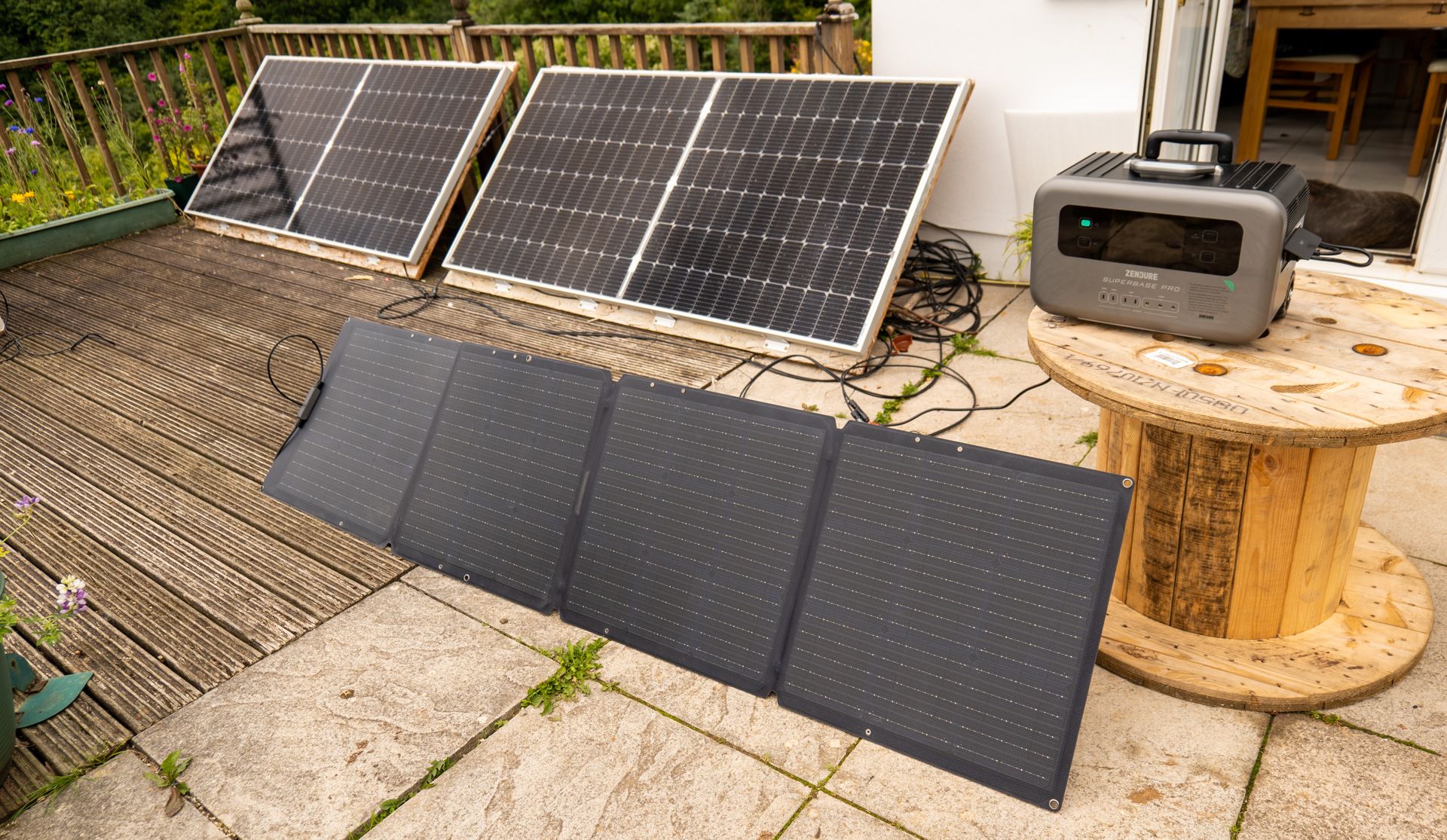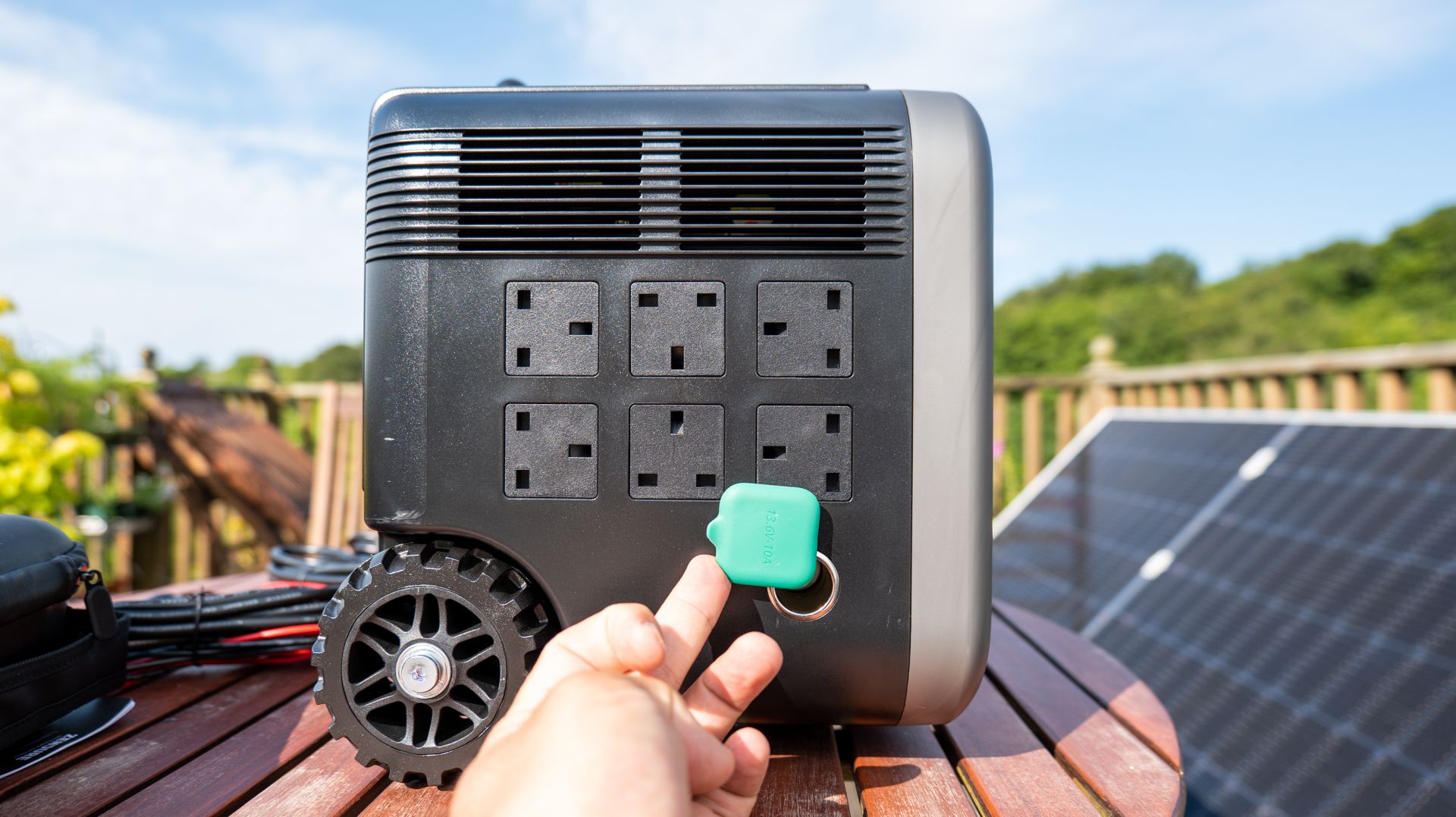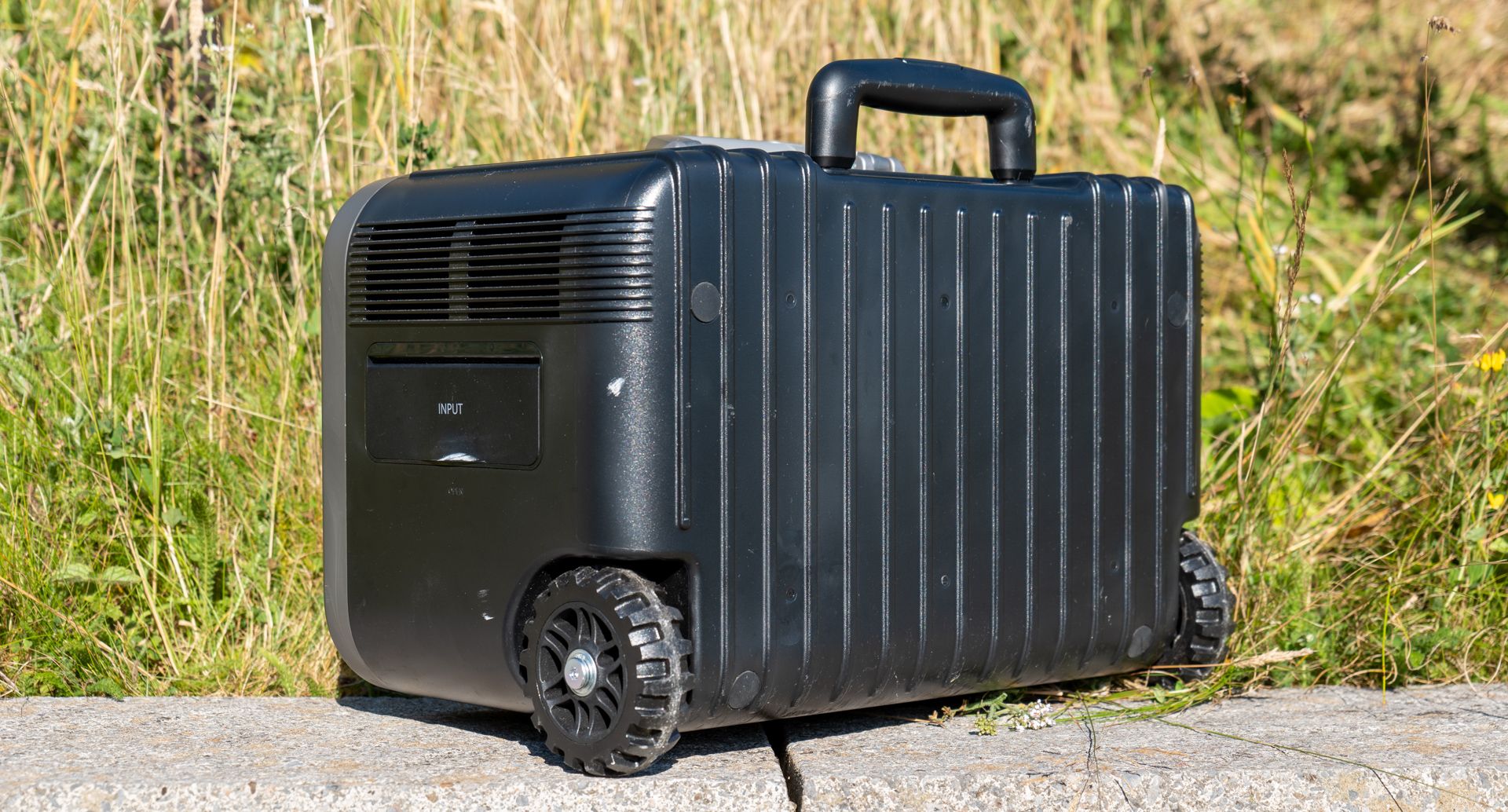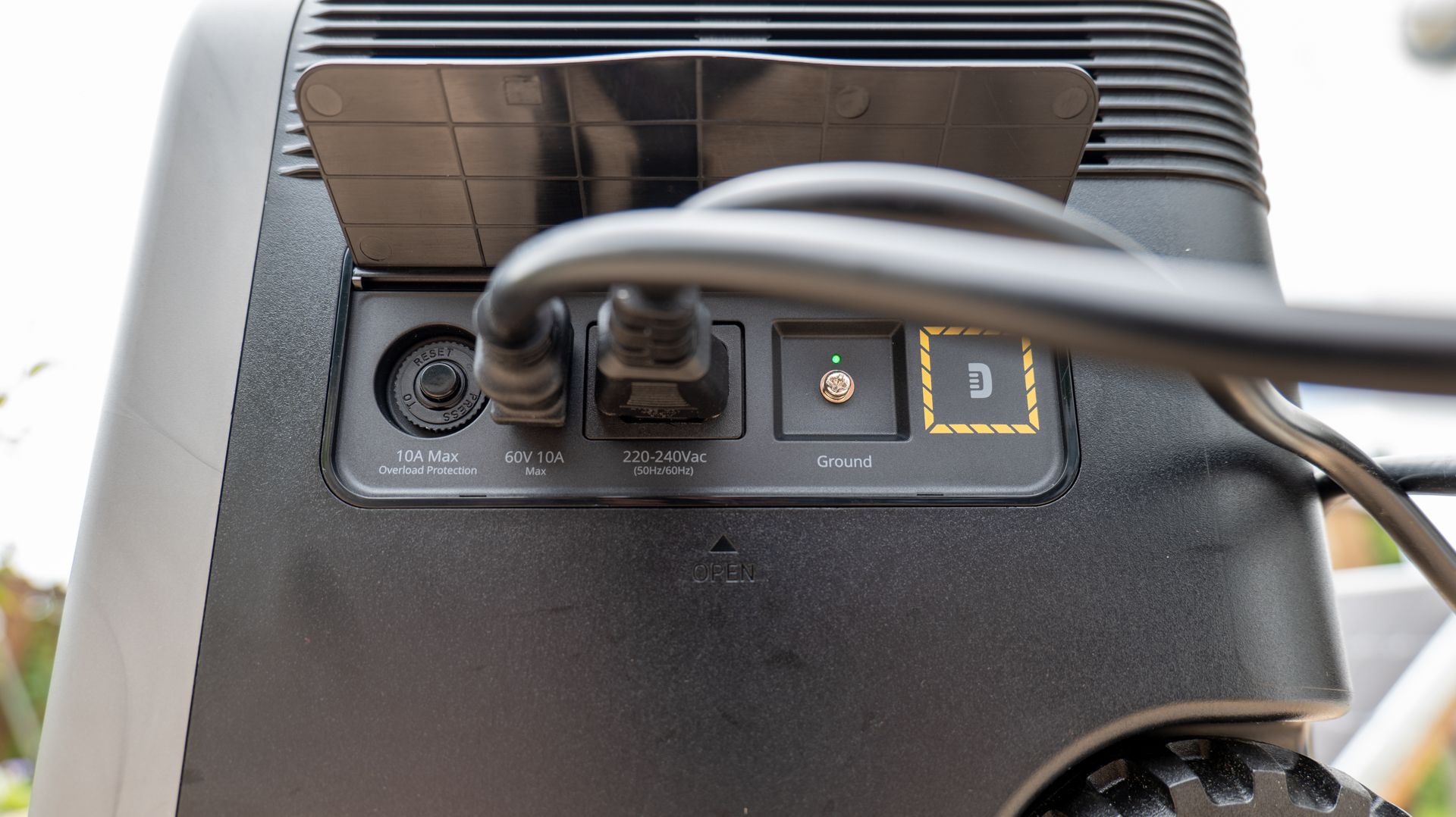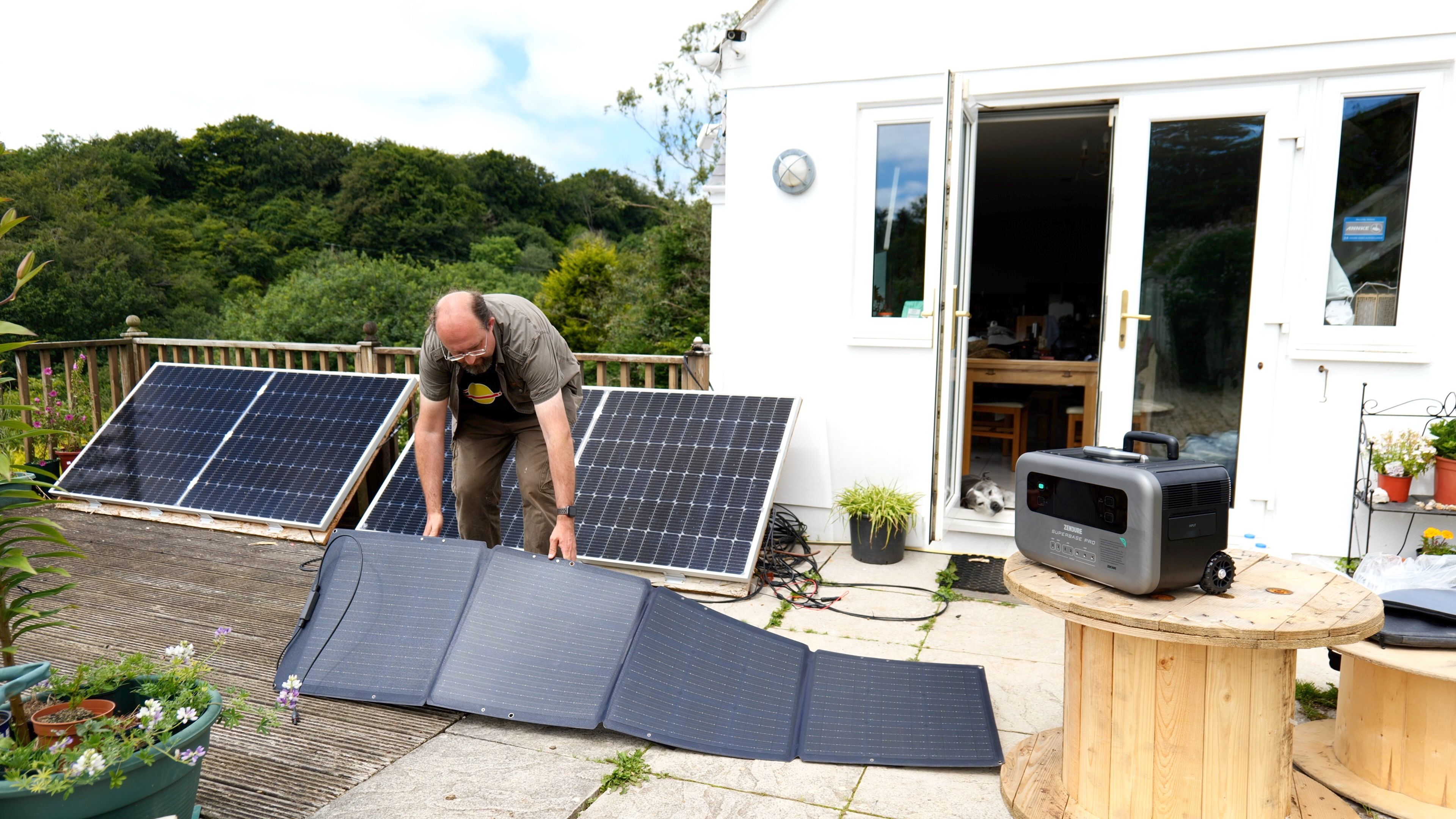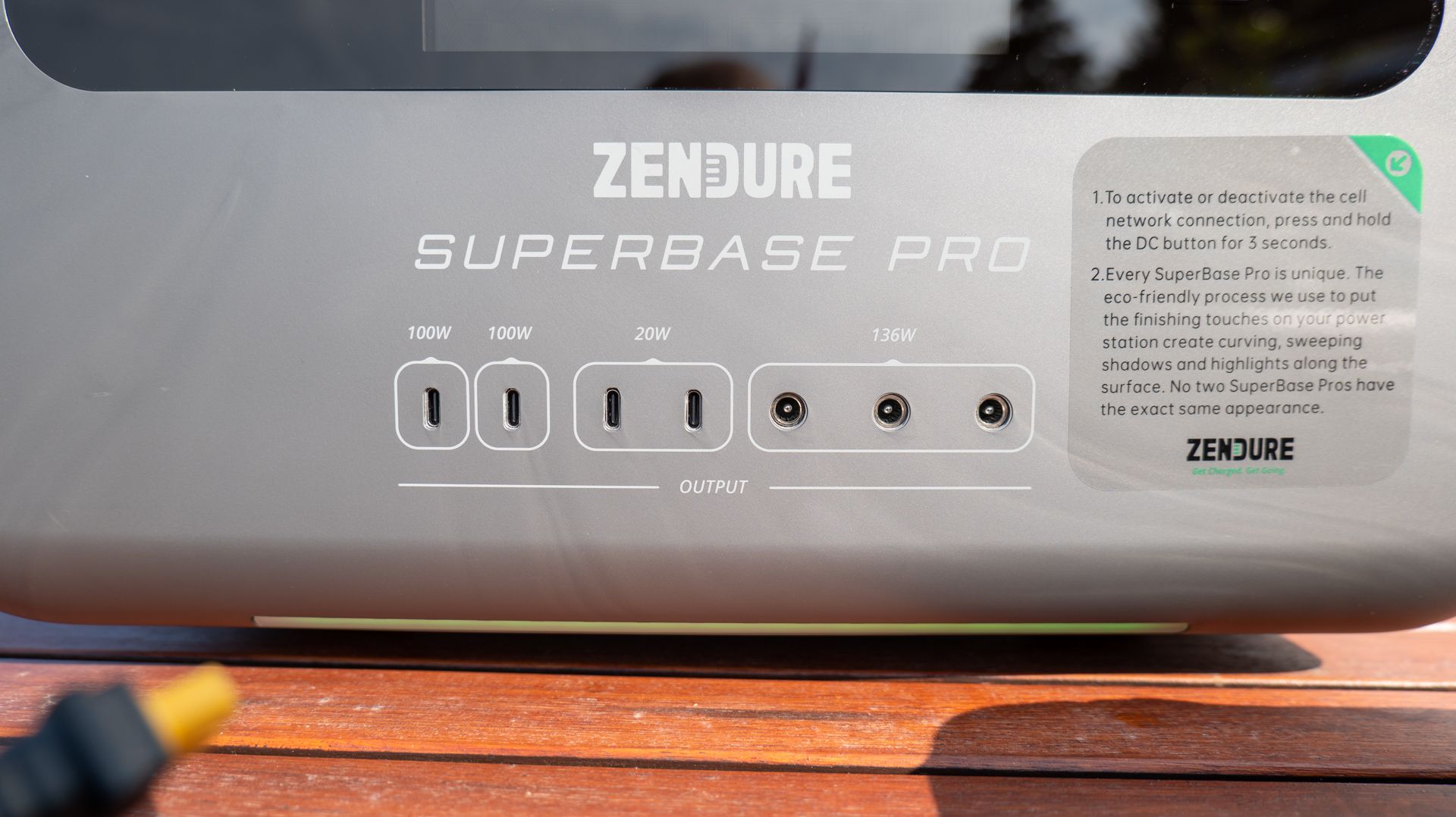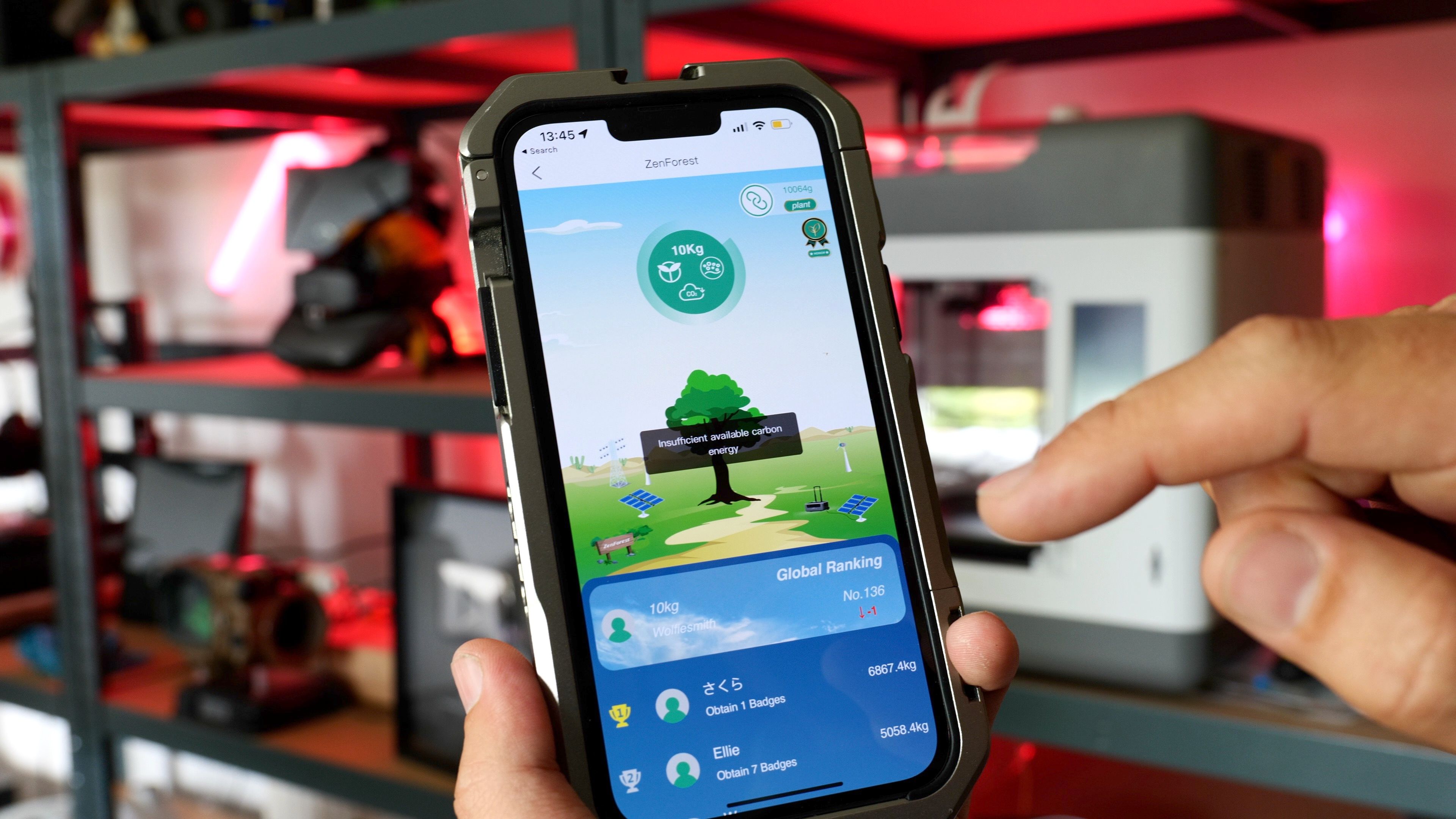Zendure SuperBase Pro
Despite the fact that it only has USB-C ports and some questionable app features, the SuperBase Pro 2000 is a goldilocks capacity for camping trips, RVs, and off-grid small cabin use. It's not going to scale up to a higher capacity as a hybrid home and portable unit, but it is a very neat and portable package with enormous charging potential that enables you to use a mix of solar panels.
It’s about as rugged as a portable battery can get, and the extendable carry handle is perfect for loading gear on top and heading along to your remote site. The 2000Wh capacity with 2000W continuous output is more than likely enough—it can run a large space heater or a kettle for at least an hour or two.
- RGB accent lighting
- Brand: Zendure
- Weight: 21kg (46lbs)
- Size: 17.5 x 10.5 x 13.8 inches
- Capacity: 2096Wh
- Output: 2000kW (3000kW in AMPUP mode); 4000kW surge
- Input: 2400W (1800W AC + 600W DC). Both inputs can be used for solar.
- Lifecycles: 1500 cycles until 80% capacity
- Can use a mix of high and low power solar panels to charge with dual inputs
- Wi-Fi Direct and 4G means you can utilize the app anywhere and leave it connected remotely
- GPS tracking
- Easy to carry, or load up with other gear
- True UPS feature
- Zendure app is sluggish
- Only has USB-C ports, not USB-A
The Zendure SuperBase Pro is a 2000Wh capacity portable battery with enormous charge potential from two solar inputs, as well as true UPS capabilities for sensitive electronics. It also includes 4G and GPS connectivity, as well as RGB accent lighting. Is this the ultimate Internet of Things emergency battery? Maybe. But it’s also just a great size portable battery to provide for all your power needs on your next camping trip.
What's in The Box?
As well as the SuperBase Pro 2000, you'll receive a hard black carry case containing:
- AC charge cable
- MC4 solar to AC charge cable
- MC4 solar to XT60 charge cable
- USB-C to USB-A adaptor
- Manual and a set of stickers
Design and Specs
The Zendure Superbase Pro weighs around 21kg (46lbs), so it's not exactly lightweight, but nor is it going to be a problem for most people to deadlift into a car or RV. It measures 17.5 x 10.5 x 13.8 inches and features two solid rugged wheels, along with an extendable suitcase-like handle. It’s certainly the easiest to carry around in its capacity class.
The design is such that you can load up luggage on top of the battery and it'll trundle along comfortably to your campsite or elsewhere.
Although the wheels are happy on most terrain, like all large capacity batteries there is no IP rating for water or dust ingress protection. Keep it out of the rain, don't try to drag it through a river, and definitely don't throw sand in the fan outlets. That said, you needn't be precious with it. As long as you're sensible and keep the display away from prolonged direct sun, it'll be happy outdoors with you.
The main body of the SuperBase Pro is made from recycled plastic, which gives it this unique, marbled finish.
On the front you’ll find four buttons: the main power switch, AC power, DC power (though this doesn't affect the USB ports), and a button to activate the Wi-Fi button. We'll talk more about the app connectivity later, but you have both Wi-Fi for connectivity while at home, Wi-Fi direct for connectivity anywhere, as well as a built-in 4G network if you need to leave it somewhere remotely. One year of 4G is included in the purchase, though it's not clear how much that'll cost to renew.
The large color display is easy to read where it matters, showing clearly the power flowing in and out of the device, the time remaining to charge or discharge, and a large central indicator of the percentage remaining with a circular green bar graph. Some of the icons that appear around the periphery can be confusing though, such as the "DC power on" which takes the form of a car adaptor plug.
Battery Technology and Pricing
Inside the SuperBase Pro 2000, you have a Lithium Nickel Manganese Cobalt Oxide (NMC) battery, rated to 80% capacity after 1500 cycles, and 60% after 3000 cycles. Interestingly, the SuperBase Pro is also available in a 1500Wh capacity with Lithium Ion Phosphate (Li-Ion) cells, which are rated to last twice as long at 80% capacity after 3000 cycles. The models are otherwise physically identical and with the same feature set, though per watt-hour comes out slightly more expensive.
The 2000Wh model (as reviewed) comes in at $2100 currently ($1.05/Wh), while the 1500Wh model is $1800 ($1.2/Wh). It's not the cheapest on the market, but it is competitive with other premium brands. The additional value comes from its superb portability, adaptable solar inputs, and true UPS capabilities. Personally, I could do without the connected app features, but that might also factor into your decision.
Inputs and Charging
You can of course charge from AC, with a configurable charge rate from 300W to 1800W. This uses a standard high-current IEC cable, so there's no need for an external power brick. At the fastest rate, you can get to 80% capacity in less than an hour.
As you might have noticed from the box contents, there are also, intriguingly, two different ways to connect some MC4 solar cables.
The XT60 port can handle panels up to a maximum of 600W, at 12-60V/10A. This is great for smaller solar panels, such as a few foldable 100W or 200W portable panels. In the past, I've had trouble charging large batteries from portable panels, as the activation voltage in less than ideal conditions just isn't high enough. However, there's no DC9mm input jack, so you couldn't use Jackery SolarSaga panels without some sort of adaptor.
As well as the XT60 input, you can also plug larger solar installations directly into the AC port, using the included MC4 to AC cable. Like the regular AC charging, this works up to 1800W, with a minimum 60V up to a maximum of 160V.
Even more interesting is that both inputs can be used at the same time, for a total potential charge rate of 2400W assuming you maxed them out. This can either be a mix of AC and solar, or two different sets of solar panels.
Zendure produce their own 200W portable panels, of which they kindly sent one to try out with the SuperBase Pro. You can connect up to eight of those to the AC input of the SuperBase Pro. While this isn't a review of those panels, I will say that I found them to be a little underpowered and quite unwieldy. The 200W Zendure panels have their own carry case, which is nice, but it's not as convenient as panels with a built-in handle and magnetic latching clasp. With a four-fold design and elastic legs on the back of each section, setting it up is a laborious process of getting the right spot, angling the first section, then the next, then having to do it all again because it moved.
Despite the 200W rating, I was only ever able to get up 140W out of the Zendure 200W panels in ideal summer conditions, directly facing the sun and angled correctly. So while it's a decent enough portable panel that's better than carrying two smaller 100W ones, I can't see myself buying eight of them. At that point, you're not going for portability, so you might as well as just invest in some higher-powered static panels, and mount them on top of your RV or cabin.
For testing, I was able to make use of the simultaneous solar charging from both some foldable portable panels (about 400W max rated), as well as some larger, high-efficiency static panels (1100W total).
Precisely how long it takes to charge the SuperBase Pro from solar will depend entirely on how many panels you can connect; in theory, it would take an hour if you could fully utilize the maximum possible input, but that's unlikely. Still, in a country like the UK where sunshine is at a premium, being able to use dual inputs for mismatched panels is a fantastic way of harvesting every little bit of the sun's power whenever possible.
Outputs
On the left side, you’ll find six household AC sockets (only four in the European version), though these are placed quite close together, so if you have large adaptor plugs you may not be able to use all of them. Zendure has helpfully aligned them all slightly differently though, so with plenty of experience playing Tetris, it might be possible. Also on the side is a 12/13V car port for portable refrigerators and the like.
On the front, you’ll find three DC ports (max 136W combined), and four USB-C ports, two of which are 100W Power Delivery (5-20V), and two of which are 20W fast charge. There is however a noticeable absence of more common USB-A ports. While USB-C might be the standard moving forward, in many cases even devices with a USB-C charging point will supply a cable that terminates in a USB-A plug. It's much less common to find a straight-through USB-C to C charging cable.
Zendure recognized this might be an issue, and includes a small USB-C to USB-C adaptor in the bag of goodies, but it's still a curious design choice. Given the lower cost of USB-A sockets, one can only assume they were being "brave" by not having any. Unfortunately, the natty little adaptor is easy to lose, which I did, and after locating it again, I managed to break it anyway. This isn't uncommon with these adaptors: the USB-C side is small, and the heavy USB-C cable weighs it down. So my advice would be to double check your cables before you head out into the wilderness, lest you be caught short without a charger (the horror!)
I should also note that the DC button doesn't actually affect the USB outputs (this is intentional, not a hardware error). It's an unusual UI choice, especially when the app reports USB output under the total DC output (because it is DC). That said, I understand why they did this. It can be incredibly frustrating if you’ve just quickly plugged in your phone and expected it to charge because the battery is clearly on, only to come back an hour later and find actually it hasn’t charged at all because you didn’t activate DC output. So we'll chalk this up as a good feature, then.
AC Power Output
The SuperBase Pro has a continuous output rating of 2000W, which is average for a battery of this size. Using the app, you can enable an "AMPUP" mode, which increases the continuous output to 3000W, but should only be used with on device. The surge rating is 4000W, but I found it was quite intolerant of overpowered output, shutting down quickly after only a few seconds of surge. This should handle most appliances, though.
I tested using a large kettle (sustained 2.4KW), and sure enough, I needed to enable the AMPUP mode for it to work correctly. I also have an electric hob I like to cook on outdoors; both appliances cannot run at the same time on the SuperBase Pro.
For most uses, this shouldn't be a problem. It'll handle nearly any appliance you'll throw at it; but not lots of them at the same time, so you may need to manage the output a little more carefully.
Uninterruptible Power Supply
Many large batteries have some form of power passthrough, to act like a UPS, while not actually being a UPS. These allow them to keep your appliances turned on in the event of a grid power outage, but usually this means a short downtime (measured in tens of milleseconds) while it switches over to the battery. For most appliances, this wouldn't matter. Your freezer will still keep the contents frozen for a fraction of a second.
Unfortunately, this sort of small off time while switching can be bad for delicate electronics, and may result in data loss. You wouldn't want a storage device or desktop PC connected.
Zendure claims the SuperBase Pro can in fact act as a "true UPS" due to extremely fast switchover time, and in my testing, I found that to be true. The feature is automatic—just plug in the AC charger, and something on the output side, and you'll see a small UPS icon appear on the display so you know it's safe. My desktop PC stayed powered when pulling the plug, so the claim appears to hold.
This is likely to be a minor feature for most people, but if you need it, it'll be well appreciated. Remember that for something like a laptop PC, use of a UPS doesn't matter. The laptop has its battery to smooth over short outages.
GPS, 4G, and RGB Lighting, Because Why Not?
The Superbase Pro is equipped with a built-in GPS and 4G chip, on top of the Wi-Fi and Wi-Fi Direct connectivity. To activate the 4G connection, you need to hold down the DC button for about three seconds; it can then take up to thirty seconds to actually connect, at which point the icon stops flashing. If you turn on the Wi-Fi instead, it'll automatically deactivate the 4G connection, and you'll need to manually reconnect later.
In order to use the GPS function—effectively a built-in tracking device—you'll need to ensure the 4G connection is active. On the off-chance you've got the 4G active, and someone tries to steal this 20KG beast, you can in theory track it down on the app. Other than that, I've struggled to think of a use for it. Sadly, I wasn't able to test this out, and the map only showed my phone location, but I'm confident Zendure will have this working by the time it ships to UK customers.
Other than that, the app offers a comprehensive set of data views for input, output, remaining charge and discharge time. It's also from the app that you can enable the AMPUP mode for higher-powered devices, and configure the charge rate from AC. So far so good.
You'll also find a color selector for the built-in RGB light. The light isn't bright enough to be of any practical use, and it faces downwards, so don't expect this to power your impromptu tent party. It provides some pleasant ambiance, and allows you to spot the battery in the dark in case your party has gone on a bit late, but otherwise feels a little pointless. Some batteries include a bright white light panel on the side, with SOS feature. This isn't one of those.
Elsewhere in the app is a curious section called the ZenForest. This is Zendure's way of promoting green energy usage. Although not clearly explained, charging over solar seems to generate little bubbles of CO2 (that you've saved?), which you then add to your total, and can view your position on the global leaderboard. I'm up to 132nd. If you have enough CO2 saved up, you can plant a virtual tree, or something. There's also an awards system for doing things like using the light, or setting a shut-off time, or charging ten times, and other similarly arbitrary achievements. Thankfully you can completely ignore this aspect of the app if you want.
Generally, I found the app to offer more than enough features that I'd want, but it was slow and unresponsive. Even the ZenForest took a good five seconds to load. When connecting over 4G, it could take as much as 30 seconds to update the current battery input output stats. Wi-Fi produced the best results, but even then it's not as responsive as other smart battery apps I've tried. Unfortunately, even with all this connectivity, there are no automation recipes for services like IFTTT.
Is The Zendure SuperBase Pro 2000 For You?
Despite the fact that it only has USB-C ports and some questionable app features, the SuperBase Pro 2000 is a goldilocks capacity for camping trips, RVs, and off-grid small cabin use. It's not going to scale up to a higher capacity as a hybrid home and portable unit, but it is a very neat and portable package with enormous charging potential that enables you to use a mix of solar panels.
It’s about as rugged as a portable battery can get, and the extendable carry handle is perfect for loading gear on top and heading along to your remote site. The 2000Wh capacity with 2000W continuous output is more than likely enough—it can run a large space heater or a kettle for at least an hour or two.
The Zendure SuperBase Pro isn't perfect, but if you need high power output and capacity in a portable package with UPS capabilities and the ability to take advantage of a mixed set of low and high-power solar panels, it's a great option with a competitive price.

